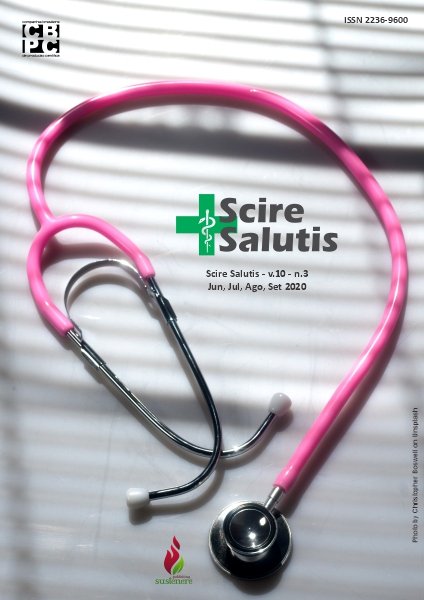Prevalence of intestinal parasites in schoolchildren from two municipalities in Bahia, Brazil
DOI:
https://doi.org/10.6008/CBPC2236-9600.2020.003.0002Keywords:
Intestinal parasites, Children, School, PoliparasitismAbstract
Intestinal parasitic infections caused by helminths and protozoa affect several people, the most infected being school-age children contributing to the worsening of public health problems, especially in underdeveloped and developing countries. The aim of this study was to diagnose intestinal parasites from children aged 5 to 15 years old from the cities of Salvador and Paulo Afonso, Bahia - Brazil. The study was carried out from February 2013 to December 2014. 139 fecal samples were collected from schoolchildren from Salvador and 106 fecal samples from Paulo Afonso totaling 245 samples. The spontaneous sedimentation method was used to examine fecal samples. The results of the tests revealed that among the intestinal parasites the most frequent in the children's samples were the protozoa Endolimax nana with 19.38%, followed by Entamoeba coli with 10.2% and Blastocystis spp. which presented 8.6% of the total samples collected and analyzed. In the city of Paulo Afonso the protozoa Endolimax nana (12.69%), Blastocystis spp. and Giardia lamblia both with (10.31%) and Entamoeba coli (7.14%) were the most prevalent. The helminths diagnosed in the municipality of Salvador were Ascaris lumbricoides (9.13%), Trichuris trichiura (3.76%) and Hookworms (2.15%), while in Paulo Afonso the findings were Ascaris lumbricoides (6.3%), Hookworm and Hymenolepis nana com (1.58%) and Trichuris trichiura (0.79%). As for multiple parasite infections, the following percentages were observed: 31.65% monoparasitized from Salvador and 31.14% from Paulo Afonso; multiparasitic with 23.05% of Salvador and Paulo Afonso with 16.98%. Regarding the frequency of enteroparasitosis by age group, in the municipality of Salvador it was found more frequent in the age group of 9–11 years old with 39.04% and in the city of Paulo Afonso with the age group 5–7 years old with 42.85 %. Regarding the frequency of parasites by sex, the female was the most infected with 28.06% in the city of Salvador and with 25.47% in Paulo Afonso and also with the highest percentage of polyparasitism by sex with 53.12% in Salvador in Paulo Afonso female and male both with 50%. It is concluded that in the studied samples a considerable portion of infected children were found. And these data suggest the conduct of more in-depth research and routine stool examinations with an age group that corresponds to children aged 5 to 13 years in the cities surveyed, due to the high rate of infections in this segment as well as indicating possible socioeconomic problems in the studied region.
Downloads
Downloads
Published
Issue
Section
License
The CBPC - Companhia Brasileira de Produção Científica (Brazil CNPJ: 11.221.422/0001-03) the material rights of the published works. The rights relate to the publication of the work anywhere in the world, including rights to renewals, expansions and dissemination of the contribution, as well as other subsidiary rights. All electronically published works may subsequently be published in printed collections under the coordination of this company and / or its partners. The authors preserve the copyright, but are not allowed to publish the contribution in another medium, printed or digital, in Portuguese or in translation.








